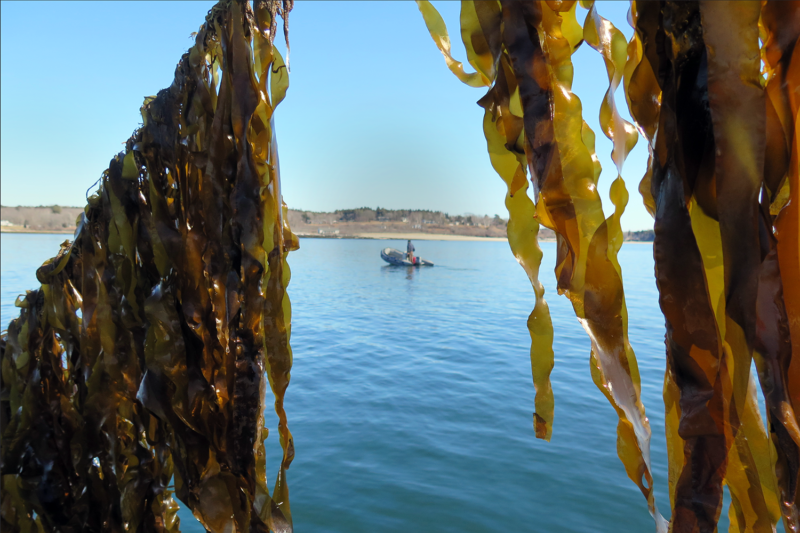Despite a significant wild-harvest industry, the long-term outlook indicates a shift toward seaweed aquaculture along the northeast U.S. coast. Nearly two dozen licensed farms operate from New York to Maine, and they contribute niche value-added products to the marketplace.
The wild industry is centered on Maine, which in 2018 had 133 licensed harvesters, says Jeff Nichols of Maine’s Department of Marine Resources. “Rockweed has consistently comprised over 95 percent of all landed seaweed,” added Nichols.
Four years back, the nearly 19 million pounds of rockweed landed represented 97.6 percent of all seaweed landed in Maine.
Landings and value have notched up in 2017. In 2016, Maine’s seaweed industry landed 17 million pounds worth $616,578 and in 2017, landed almost 20 million pounds worth $771,963.
The Maine Aquaculture Association and Maine Seaweed Council both focus on the sustainability of the aquaculture industry — bringing attention to the issue of climate change.
“Wild kelp forests in Maine are thriving in the northern part of the state, where conditions remain favorable for kelp growth and sea urchins (predators) remain rare. In the southern part of the state, we see a different story: Kelp forests are vanishing,” said Douglas B. Rasher, senior research scientist at Bigelow Laboratory for Ocean Sciences. “Warming temperatures and the arrival of new seaweed species to this area are causing the decline of wild kelp forests in the south.”
But overall, industry leaders see room for growth.
“I am indeed optimistic about kelp aquaculture in the state of Maine,” says Rasher. “Favorable conditions for kelp growth persist throughout much of the state. Moreover, we have a group of entrepreneurial people in Maine that are keen to grow this industry quickly and responsibly.







